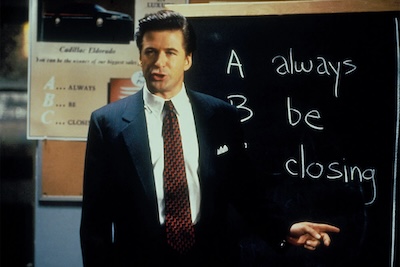Producer Michael Jackman is no stranger to working with brilliant, high-profile directors.
Across his career, Jackman partnered with Martin Scorsese, Michel Gondry, and Denis Villeneuve among many others. Sometimes, the director’s legacy is too irresistible to deny. Sometimes, it’s the script attached to the director. Sometimes, it’s the director’s previous work that inspired Jackman. But across these varied projects, one theme stands out related to Jackman’s interest and engagement on the project.
“I want to work with people I love and that’s my motivating factor, the material, the projects come from that organically,” Jackman explained.
His latest project, Conclave, brings Jackman and acclaimed director Edward Berger (All Quiet On the Western Front) together for the first time. Based on Robert Harris’s novel, Conclave stars Ralph Fiennes as Cardinal Lawrence who finds himself at the center of a dramatic investigation to elect a new pope. Jackman’s initial interest in the project came after he read brilliant screenplay bu Peter Straughan who was originally hired by producer Tessa Ross. He loved how the script basically consisted only of “talking and voting” but remained an edge-of-your-seat political thriller.
Harris’s novel and Straughan’s screenplay also offered a window into a process and a world about which Jackman knew nothing.
“[The screenplay] is a world we’ve never seen before, which I’m always, always interested in. Movies like Pushing Tin or Glengarry Glen Ross — these movies that give you a side of the world that you don’t really know, but that you suddenly now learn about in this great, emotional, organic way,” Jackman said.
When setting out to make the film, the production team’s dream cast proved difficult to assemble all at once, but schedules eventually cleared, allowing the project to move forward. Now in production, Jackman collaborated to bring Straughan’s script and Berger’s vision to the screen.
In fact, he considers safeguarding a director’s vision a producer’s primary task. A producer, according to Jackman, lives in a rarified space where they must blend art and commerce to help create the perfect end result.
“There’s a great benefit that comes, I think, from the friction of art and commerce because that process includes challenging the director on what he wants to shoot and why. That forces all of us to ask, ‘What’s really important? What’s at the core of this?,’ Jackman offered. “I always feel it’s not good to have unlimited time and money to do something because I think you wind up not giving it as much thought. When you’re forced to figure it out under that pressure cooker that we’re in when we’re making a movie, I think there’s benefit. Then, my job is also to protect the director from pressure.”
When making creative decisions on Conclave, Jackman and the production team knew that recreating the Sistine Chapel was non-negotiable. The story hinges on the voting process that takes place within that historic location, and obviously, they were not able to film on location. With the set recreated on a sound stage in the famed Cinecittà Studios in Rome, the team needed to move outside and find exterior locations that echoed Vatican City.
Berger’s vision for these locations, according to Jackman, was to blend opulence with austerity. Many locations across Rome offered this necessary sense of historic grandeur crafted from severe marble. The trick was to scout as many locations as they could find that appeared as if they all existed in or were connected to the same location. One particularly challenging location to find was the corridors and chamber rooms within the Casa Santa Marta, the dormitories that house the cardinals during the conclave.
While visiting the Sistine Chapel set in Cinecittà Studios, Jackman had a brainstorm and partnered with production design Susie Davies to realize it.
“I was walking on the set early, probably early on in pre-production, where we were going to build the Sistine Chapel. It was all laid out in the middle of this huge stage. I’m looking around, and I say, ‘Do me a favor. Push this as far into the corner as you possibly can, because we may need some space,” Jackman recalled. “Then when we couldn’t find the space we wanted, Susie [Davies] said, ‘I think we could build it here, and we can get exactly what we want’.”
That meant that the rooms representing the Casa Santa Marta, in reality, lived just outside the Sistine Chapel. Building the set gave the production the appropriate long corridors that would realize so perfectly on-screen when actual locations failed.
As Jackman and Conclave travelled the fall film festival circuit, he was able to experience the film with new audiences time and again. Throughout each viewing, he encountered audiences laughing and gasping at different beats within the film. Sometimes, these reaction-eliciting moments came at completely unexpected moments.
“The first time Isabella [Rossellini] curtsied and the room burst into laughter. I thought, ‘Oh, we didn’t know it was funny. We thought it was a great moment, but didn’t know that people would react that way’,” Jackman laughed. “You’re trying to build stress and tension, but when you’re in the vacuum of having seen it 100 times or more, you start to lose perspective. Is this moment as tense as we were hoping to build it when we set out? So that reinforcement of the drama, of the thriller, of these great moments is amazing.”
Conclave is now playing in theaters nationwide.









